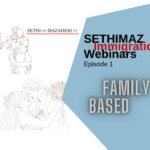Naturalization Test
The process of becoming a US citizen can be arduous for many. Among the requirements is passing a naturalization test. The test contains two parts – one for assessing the applicant’s English competency and another for their knowledge of the US government and history. This article will provide a brief overview of what to expect in the test and any exemptions to the test.
What’s on the Test?
As mentioned before, there are two sections in the test. The first one deals with the English language. This section tests the speaking, reading, and writing competencies of the naturalization applicant. The applicant does not need to score perfectly on each section, as a citizen is not required to have the perfect command of the entirety of the English language.
The naturalization test is done by answering the questions of the immigration officer. During the reading portion, the applicant will receive several sentences that they must read aloud to the immigration officer. Again, the applicant has some breathing room and can mispronounce some words, but they must be able to read a sentence and understand its meaning. In the writing section, the officer will read out sentences that the applicant must then write out.
In the second section, the applicant must correctly answer six out of ten questions regarding US history and government. The questions can vary based on each applicant. The officer must consider factors like age, education, and background of the applicant when choosing the ten questions.
Exemptions to the Test
While the civics (history and government) portion does not have exemptions unless there are other accommodations, the English portion of the naturalization test does allow for exemptions based on age and residency. Those exempt from the English portion are persons who are 50 years and older and have lived in the US with a green card for 20 years or more or persons aged 55 and older and have lived in the US with a green card for 15 years or more. Other accommodations and exemptions can apply based on disability and medical conditions.








 by Prozco®
by Prozco®